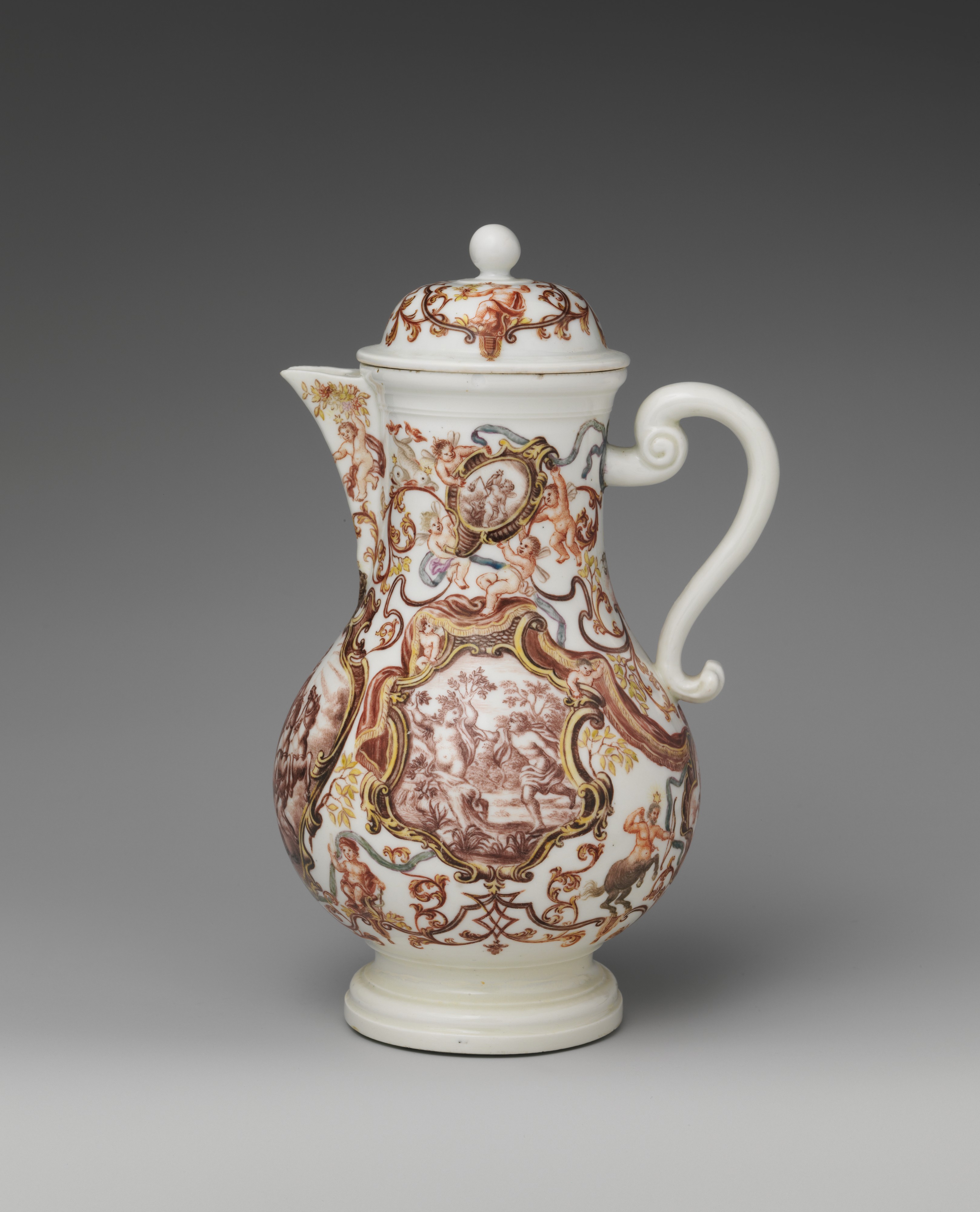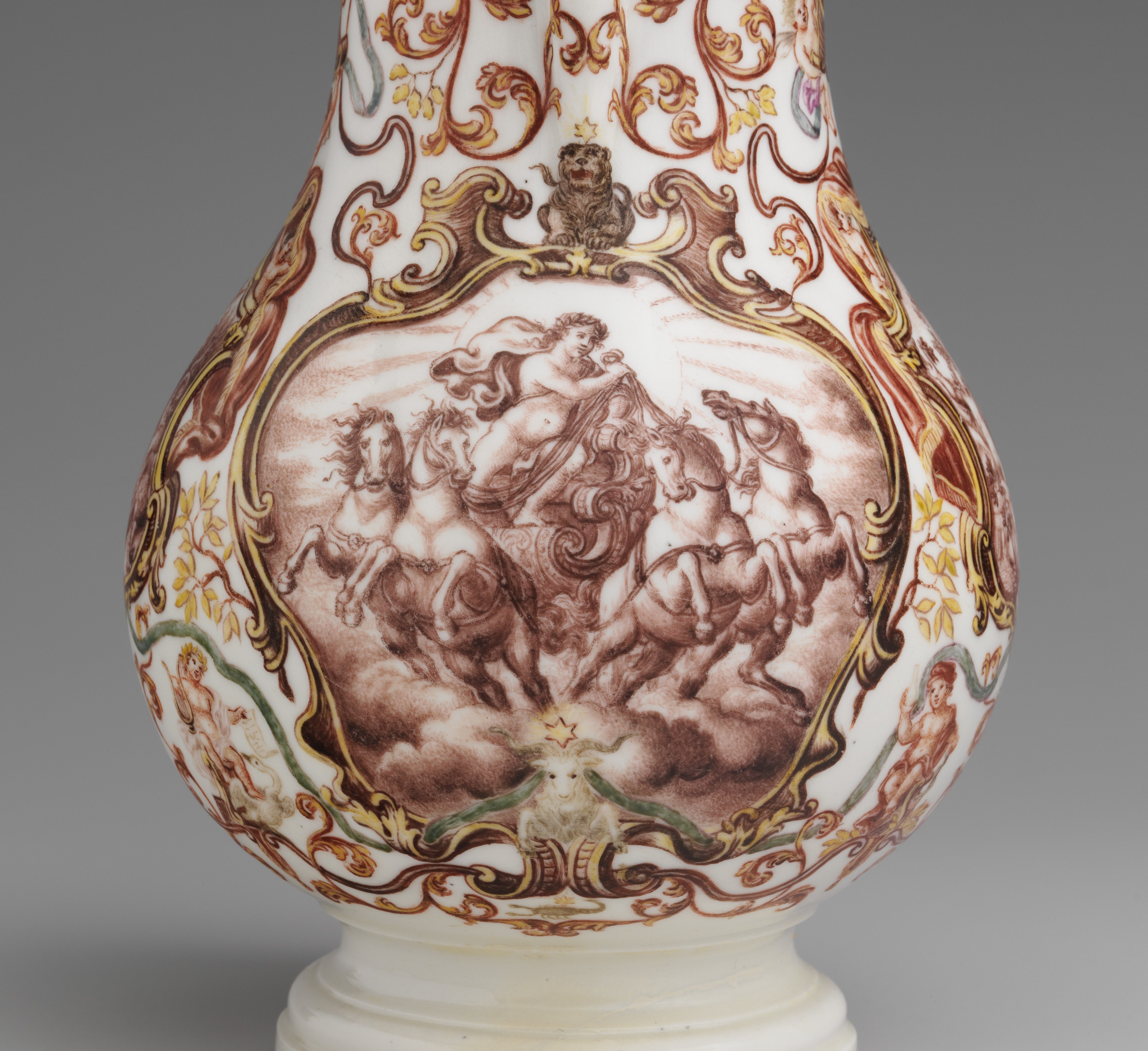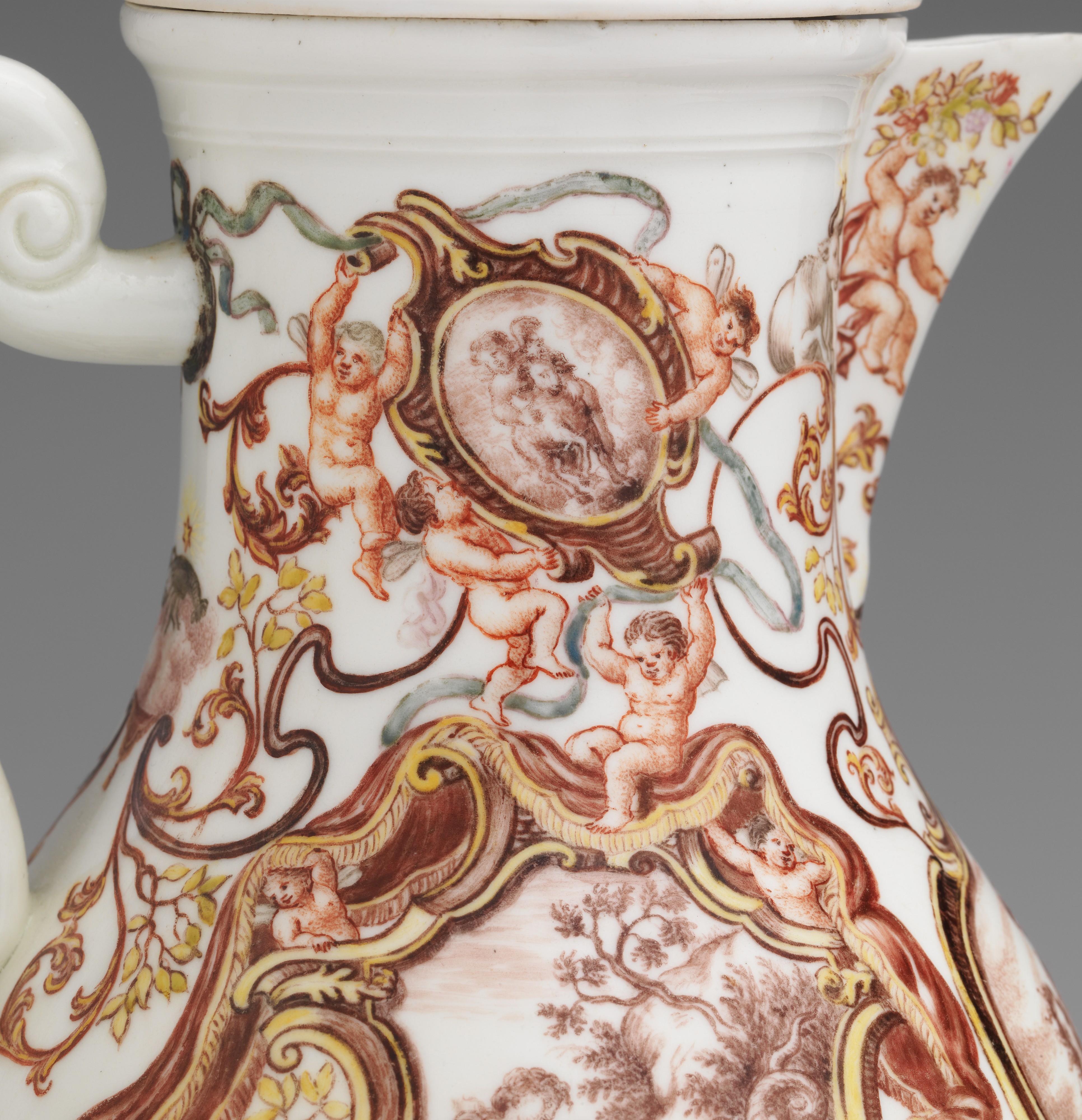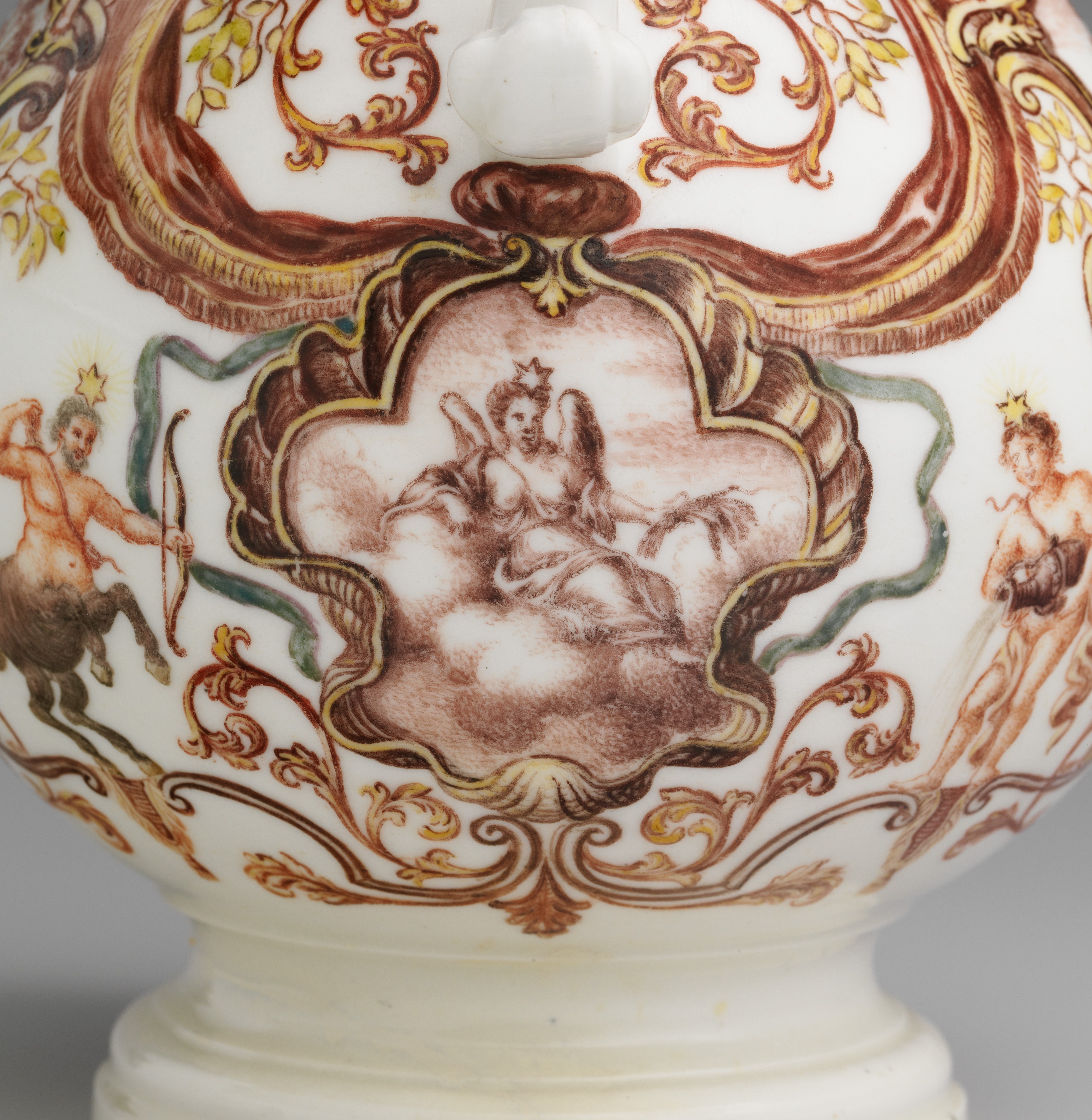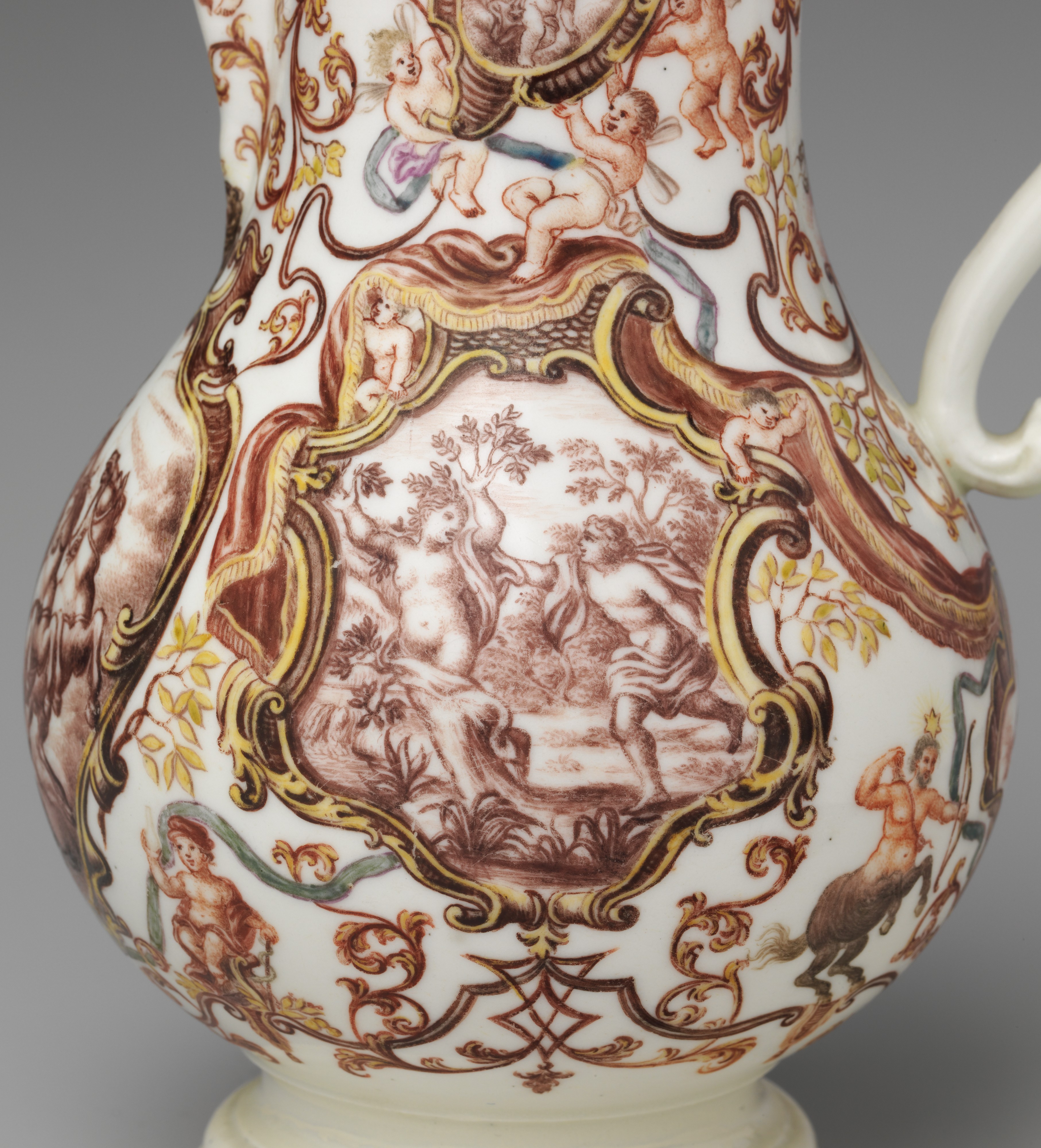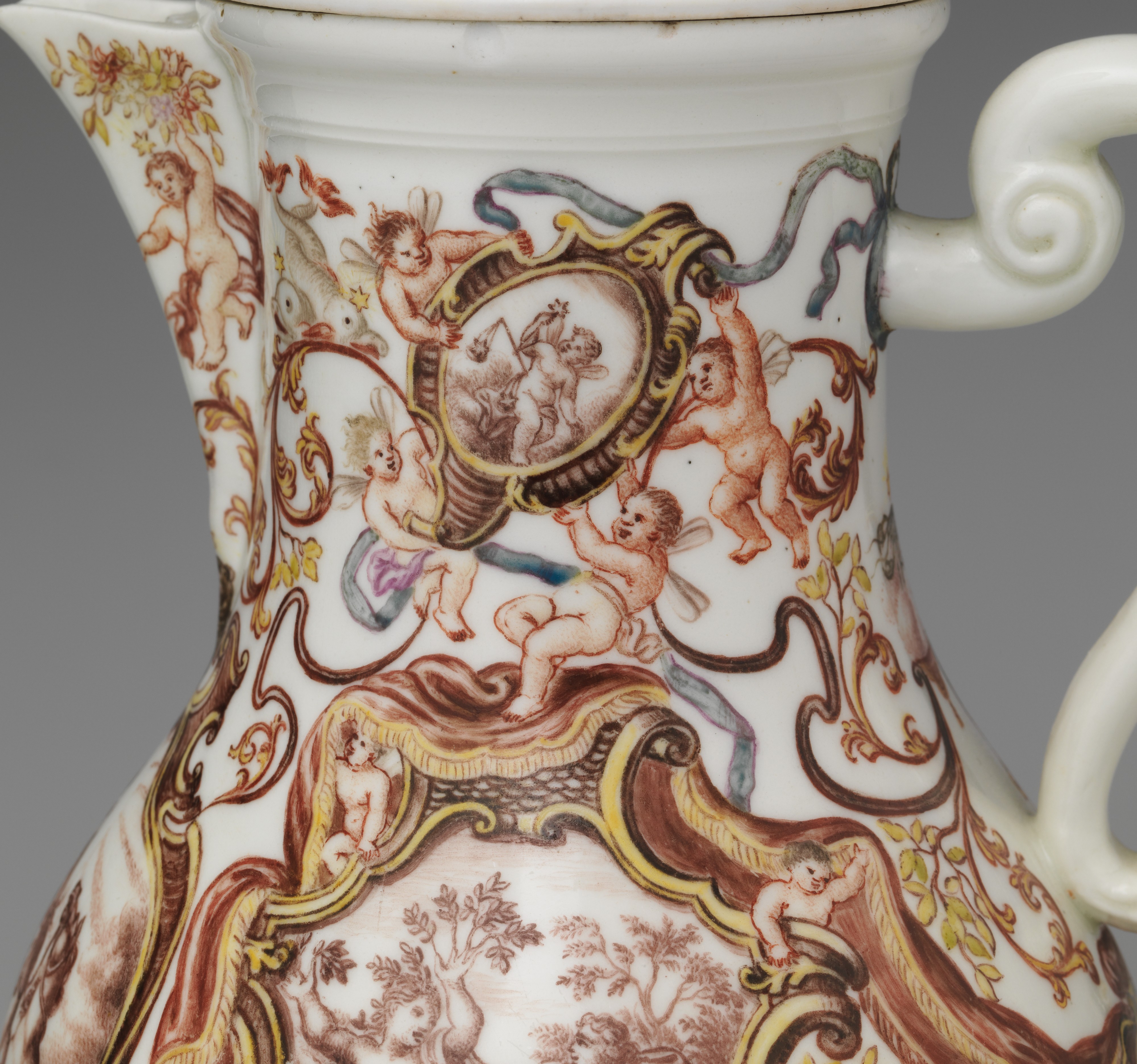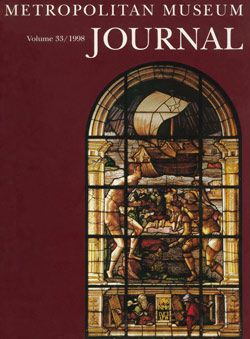Coffeepot
Manufactory Meissen Manufactory German
Factory director Böttger Period
Decoration attributed to Ignaz Bottengruber
Of the many independent porcelain painters, or Hausmalers, active in Germany and Austria during the eighteenth century, Ignaz Bottengruber (German, active ca. 1720–ca. 1730, Breslau, ca. 1728–30) was one of the most accomplished in terms of ability, creativity, and originality. He is known to have worked in Breslau, Silesia (now Wrocław, Poland) in the late 1720s, and a signed and at least two dated pieces of porcelain locate him to Vienna in 1730.[1] An unusual number of works decorated by Bottengruber bear his signature, enabling an understanding of his painting style that allows attributions of unsigned works to be made to his hand with considerable certainty. In addition, Bottengruber’s complex and dense compositions are unlike those of his contemporaries, and they reflect a degree of erudition that also distinguishes his work.
While this coffeepot is not signed, it exhibits all of the characteristics of Bottengruber’s style at its most sophisticated. Painted with three primary scenes within shaped cartouches that are visually linked to one another by a complex design of foliate scrolls, leafy branches, winding ribbons, and flowing drapery, each scene depicts an event in the life of Apollo, one of the most important gods in Greek and Roman mythology. In the central scene opposite the handle, Apollo is shown riding his chariot across the sky, causing the rising and setting of the sun; the two scenes on the sides illustrate Apollo pursuing Daphne and Apollo confronting the Python. Other allusions to the god, including his characteristic lyre and a laurel tree, are found throughout the dense composition, as are the various signs of the zodiac in the guise of putti and animals, each accompanied by a six- pointed star. While the decoration on this coffeepot is particularly ambitious, it reflects Bottengruber’s preference for mythological subjects that are rendered within a complex framework of prominent scrolls populated by small figures, animals, and birds, resulting in a richness of composition that was unmatched by other Hausmalers.[2]
Bottengruber looked to a variety of engraved works for many of his compositions and motifs,[3] although he appears to have used elements from printed sources with unusual selectivity rather than simply copying large passages from another artist’s work. Contemporary documents indicate that Bottengruber worked extensively for a learned patron in Breslau, Johannes Georgius Pauli (d. 1736),[4] and it can be assumed that Bottengruber had access to Pauli’s library, which would have provided a wealth of sources for Bottengruber’s compositions. The success of Bottengruber’s work as a Hausmaler lay in his ability to combine disparate elements and to create a decorative framework that held equal weight with those of the primary scenes. On the coffeepot, this is evident in the frolicking putti and symbols of the zodiac that are seamlessly integrated into the proliferation of scrolls and the elaborate decorative frames that enclose the scenes portraying Apollo. The variety of motifs employed by Bottengruber and the manner in which they are combined on this coffeepot reveal a remarkably sophisticated understanding of ornament and design, and the skillful adaptation of the composition to the profile of the coffeepot is a further reflection of his talent.
In addition, the restrained palette of the coffeepot is typical of Bottengruber’s work, although curiously, he has not employed gilding to enhance the decoration. Instead, he has used a yellow enamel throughout the various motifs, as well as in areas that might normally have been gilded, such as in the framing of the primary reserves. The muted colors in different shades of brown, yellow, and gray are particularly effective seen against the distinctive warm, off-white porcelain body of the coffeepot. The color of the porcelain indicates that the coffeepot dates from the factory’s early years when the first porcelain body developed by Johann Friedrich Böttger (German, 1682–1719) was characterized by a warm, creamy tone due to its high calcium content (see 42.205.26).
It is not known if the Museum’s example was decorated to accompany a larger service that included cups and saucers. One tea bowl and saucer with decoration similar to the coffeepot survive in Vienna.[5] However, these two pieces along with four other related bowls and saucers must have belonged to a different service, because their decoration includes gilding, unlike the coffeepot under discussion. Despite this difference, the coffeepot is linked to these tea bowls and saucers by the fact that all of them incorporate six-pointed stars in the painted decoration, a symbol that is associated with the Habsburg Emperor Charles VI (1685–1740), which suggests all were intended for his use.[6] Bottengruber is known to have produced at least one object for the imperial family. A covered bowl with decoration firmly attributed to his hand in the Museum[7] bears the entwined initials EC for the Empress Elisabeth Christine (1691–1750), the wife of Charles VI, and it can be assumed that it was commissioned from Bottengruber for presentation to the empress. This small group of objects, with probable imperial provenance, is an indication not only of Bottengruber’s status but also that of porcelain decorated by the finest independent painters from the second quarter of the eighteenth century.
Footnotes
For key to shortened references see bibliography in Munger, European Porcelain in the Metropolitan Museum of Art. NY: The Metropolitan Museum of Art, 2018)
1 Much of the current state of knowledge of Bottengruber’s career is due to Cassidy- Geiger 1998. See also Kuhn 2009, pp. 529–37. A dated waste bowl inscribed VIENNAE is illustrated in the latter publication on p. 535, fig. 6:30.
2 See, for example, a pair of Meissen bottles with decoration attributed to Bottengruber; Sotheby’s, London, sale cat., April 15, 1997, no. 128.
3 Cassidy- Geiger 1998; Cassidy- Geiger 2008, pp. 637–39, no. 323.
4 Cassidy- Geiger 1998, p. 245.
5 Ibid., p. 257, figs. 44, 45.
6 Ibid., p. 257.
7 MMA 1974.356.489; Chilton 2009b, p. 261, fig. 3:31.
Due to rights restrictions, this image cannot be enlarged, viewed at full screen, or downloaded.
This artwork is meant to be viewed from right to left. Scroll left to view more.


